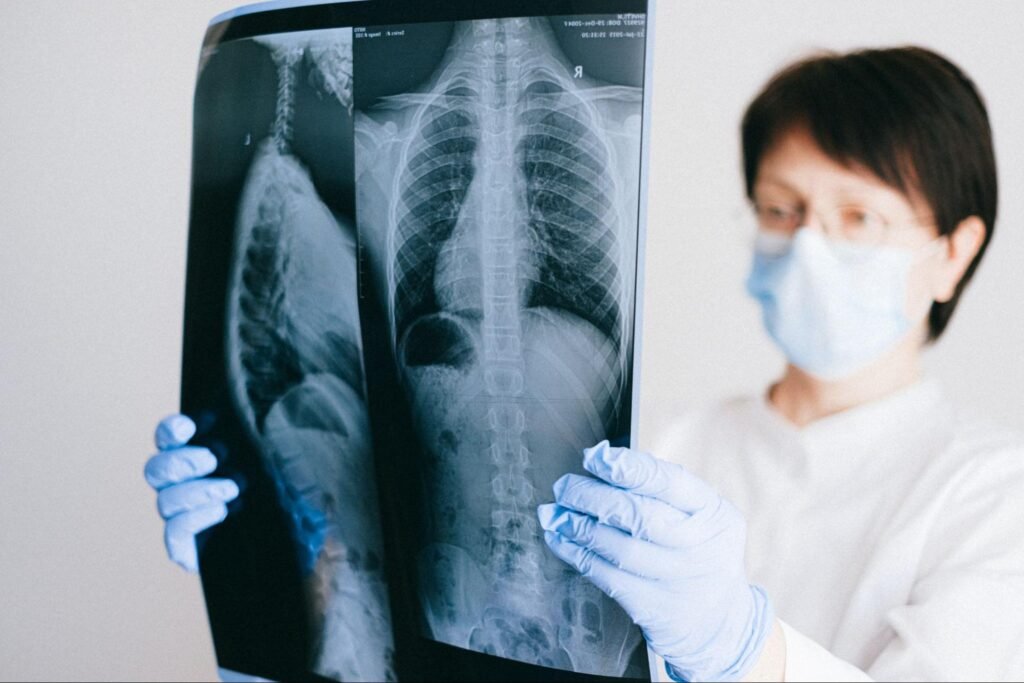Let’s start with a simple question: What is the oxygen level? In Leyman’s language, the normal oxygen level in human is the average amount of oxygen present in your blood and traveling throughout your body.
There are certain red-coloured cells called Red Blood Cells (RBCs) in the blood that carry oxygen from cell to cell. This oxygen, in its molecular form, attaches to the Haemoglobin protein(the red-coloured pigment that makes RBCs red) within the RBC and gets transported to the organs.
The amount of molecular or gaseous oxygen bound with the Haemoglobin tells us briefly the oxygen level in our blood.

Below the normal levels, there can be serious complications. These complications can either be life-threatening or cause damage in the long term.
Hence, it is important to know more about this. Stick till the end to understand different oxygen levels in human for different ages and conditions.
Measure Blood Oxygen Level
In 2020, the whole world turned upside down after the hit of Covid-19. And probably very few had known about oxygen saturation before then. Now it’s compulsory to measure it wherever you go before taking entry into any building as the low levels of oxygen may indicate that you’re having symptoms of the infection.
When we need to measure oxygen level in blood :-
According to doctors, the average normal oxygen level in human blood should have around 95% to 100% oxygen saturation. Even if you’re not into medical sciences, you can still know that oxygen saturation is directly connected to the heart, brain, and lungs.

If these levels drop below 95% then one starts facing modest health-related complications. The breathing may start getting shorter, the heart beat faster or the person may pass out. You must not neglect these symptoms and go to see a doctor who checks your oxygen level (or you can measure it beforehand at home using a device called ‘Pulse Oximeter’).
How to measure oxygen level in blood:-
Recent technology has developed a quick oxygen-measuring device popularly known as Oximeter or Pulse Oximeter. It’s that clipper kind of thing that doctor attaches to your index finger and a number shows on its tiny screen. That is your oxygen level.

Nowadays, it’s used in various public places to quickly check your level to understand if you’re having any Covid-related symptoms or not, or simply sick.
Earlier you had to visit a hospital and get admitted. The doctor would check your levels by attaching a similar clipper that connects through a wire to a machine showing different numbers. And the doctor would tell you if your levels are normal or not.
Oxygen Levels In Humans With Health-Related Issues
As mentioned above, the oxygen level in an average human should be 95-100%. But what if it’s different for people with different conditions?

Below are some of the conditions when the normal levels differ from usual:
- Asthma
- Heart Disease
- Emphysema (damage to lungs due to smoking)
- Anaemia (loss of blood)
- Congenital Heart Disease (by birth)
- Severe Anxiety related conditions
These affect oxygen amount in blood in a negative aspect. In chronic or severe conditions, the person’s blood may have below 95% or 90% of the normal level.
Oxygen Levels In Human For Different Age Groups
Does the oxygen in blood remain the same from birth until old age? The scientific data says otherwise. As you’re born newly, your blood doesn’t have as many blood cells as an adult does since your body hasn’t even started developing fully. This tells us that the normal oxygen level in humans isn’t the same in all age groups.

Let’s have a brief idea of it here.
- Newborn around the age of 24 to 48 hours: 92-93% normal saturation. As the age grows, the saturation starts rising in blood to 95% and then above it.
- Children (up to adulthood): 97-99% normal saturation.
- Adults (generally up to the age of 70): 95-100% normal levels.
- Adults or old age (above 70 years of age): the saturation slightly drops to about 95% and sometimes near 90%.
Changes In Oxygen Level in Humans While Sleeping

When we fall asleep, a lot of our body functions stop; only a few organs work actively and effectively. We know that heart doesn’t stop when we are asleep which explains that we also don’t stop breathing when talking normally.
Although chemical functions drop during sleep, our heart and lungs do not haste their work. There are small bag-like structures in our lungs in the number of millions. These bags are responsible for the diffusion of oxygen into our blood.
During sleep, some of these leave the respiratory cycle to rest. This reduces the amount of oxygen diffusing into the blood and traveling across our bodies. Because of this, the normal oxygen level in human drops to 90-95% in sleep.
This level is normal for everyone but if it keeps dropping and reaches a mark below 90% then that’s an alarming state. The organs don’t receive enough oxygen to work and start performing regressively. The brain, one of our vital organs, slowly starts degenerating if enough oxygen is not given to it beyond a limit of time. In such conditions, the person may face confusion and memory issues in wake life.
To maintain normal levels always, keep a healthy lifestyle along with a good and natural diet. Breathing exercises and yoga can also help you with longer and deeper breaths that bring oxygen to most of the tissues in your body. If you’re suffering from a chronic breathing disorder related to anxiety or any medical condition, please take the expert’s advice and proceed carefully.
Disclaimer
This article’s motive is to share knowledge on health as easily as possible with every reader out there. It does not provide any guidance or advice on any health-related condition.
Read more about Anxiety if you have Anxiety related problems.
FAQs
1. How to measure my oxygen level at home?
Ans. Pulse oximeter is a device that comes in digital form and has become a common usable device ever since the pandemic hit. You can attach it externally to your index finger and it shows your oxygen level. It is available on Amazon too.
2. How to increase my blood oxygen level naturally?
Ans. An effective way to do this can be “breathing in fresh air” and “basic breathing exercises“. The morning breeze and a short yoga session in a fresh environment can enhance the oxygen level in your blood and also boost your immunity.
3. What foods can help increase normal oxygen levels in blood?
Ans. Any fruit or vegetable that contains iron, nitrate, and vitamin B12 can increase your blood cells’ capacity to carry oxygen. Thus, your blood oxygen level increases.



